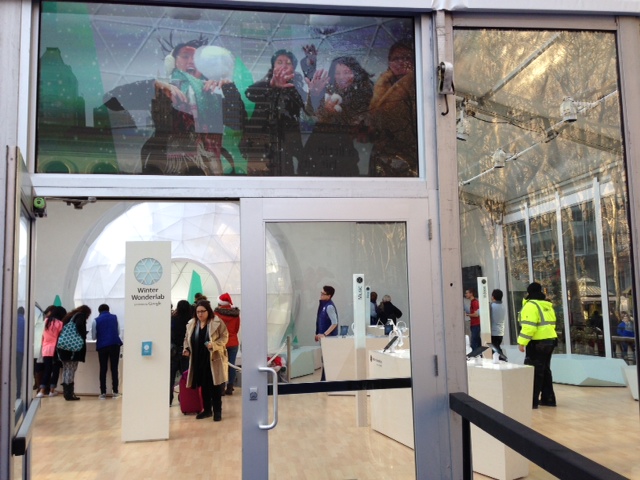
Predictions for Retail 2020: A New Brick and Mortar Experience
Doug Stephens, aka ‘The Retail Prophet,’ gave a compelling talk at the 2013 Online Retailer Conference in Australia on the store of the future. Doug is a retail futurist and shared his thoughts on the transformations he envisages for bricks and mortar spaces.
Doug describes the current state of retail as "the most remarkable period in the history of consumerism." It is perhaps the first time ever that the reach of technology exceeds that of our imagination.
Is the physical store dead? Absolutely not. Is the physical store undergoing an incredible metamorphosis? Absolutely. In my opinion, the future belongs to the retailers who leverage the advantages of both online and offline retail.
The state of online retail.
Online retail is growing at a global rate of 19% year on year. Last holiday season, Amazon transacted at a rate of 306 sales per second. ASOS sells an item every six seconds in Australia year round.
A new in-store experience.
In a world where an exceptional product is now the minimum expectation, the role of the physical retail space is moving away from being a point of sale, to a space where consumers engage, interact and fall in love with brands. One thing is certain, traditional bricks and mortar retail spaces cannot meet the future demand with what they have been doing in the past.
According to Doug, the store remains an important place for retailers of all kinds. This is demonstrated by the increasing trend of pure play retailers venturing into the offline world. Take ‘e-tail’ legends Piperlime, Etsy, Ebay, Amazon (BeautyBar.com) and Warby Parker for instance, all of who have ventured into the physical realm of retail in either permanent or pop up form. Australia’s own Shoes of Prey was once exclusively online, however recently reigned over Puma’s Osaka flagship and Lagerfeld’s Paris concept to win store design of the year for its 29sqm David Jones concept space created in collaboration with Sydney’s ‘The General Store’. Brands need some form of physical presence to fully actualise.

Above: Google’s Winter Wonderlab pop-up stores recently appeared in parks and shopping malls across the United States, including the above in New York City.
Stores will be less established, more ephemeral.
This one is clear, just take a look at the ‘pop up’ and event based retail revolution. I like to think of the store as a newspaper, a place to broadcast what’s new and next for your brand. Doug explained that leases will shorten and stores will rotate quickly through different spaces. Just this week, Google announced its plans to open up a series of pop up ‘Winter Wonderlabs’ in parks and malls to showcase their new gadgets.
Less about sales conversion, more about converting people.
Brands are now defined by the people who use them. Stores will start to focus more on converting people into brand ‘disciples’ rather than simply selling things. The store will be a highly visceral ‘emotion centre’, where shoppers can fully immerse themselves in the brand ethos. Take the Adidas ‘Runbase’ Tokyo store, where runners can drop into the base to rent a locker or even have a shower after their run.
Less products, more production and customization.
The store of the future is a place where people can truly express themselves through customization. My favourite examples include Bite Beauty’s Soho Lip Lab, where customers can craft their own custom lipstick, or Joseph Abboud’s iPad app launched at Nordstrom that allows shoppers to custom-tailor a suit and have it delivered in two weeks.
Less people, more performance.
To compete with the lower overheads of pure play retailers brick and mortar players will be forced to automate their store environments. The super futuristic Hointer showroom that uses robots to deliver your jeans is a fascinating example. Clerks, cashiers and others performing routine tasks will be replaced by technology, however the sales people that remain in store will be passionate brand advocates. Take the tech-heads at Apple, the makeup mavens at Sephora and the Yogis at LuluLemon for instance. Increasingly we can expect to find in store super-users and undying brand devotees.
So, what are your top predictions for the retail spaces of the future?
Disclaimer: The statements and opinions expressed in this article are those of the author(s) and do not necessarily reflect the positions of Thoughtworks.














